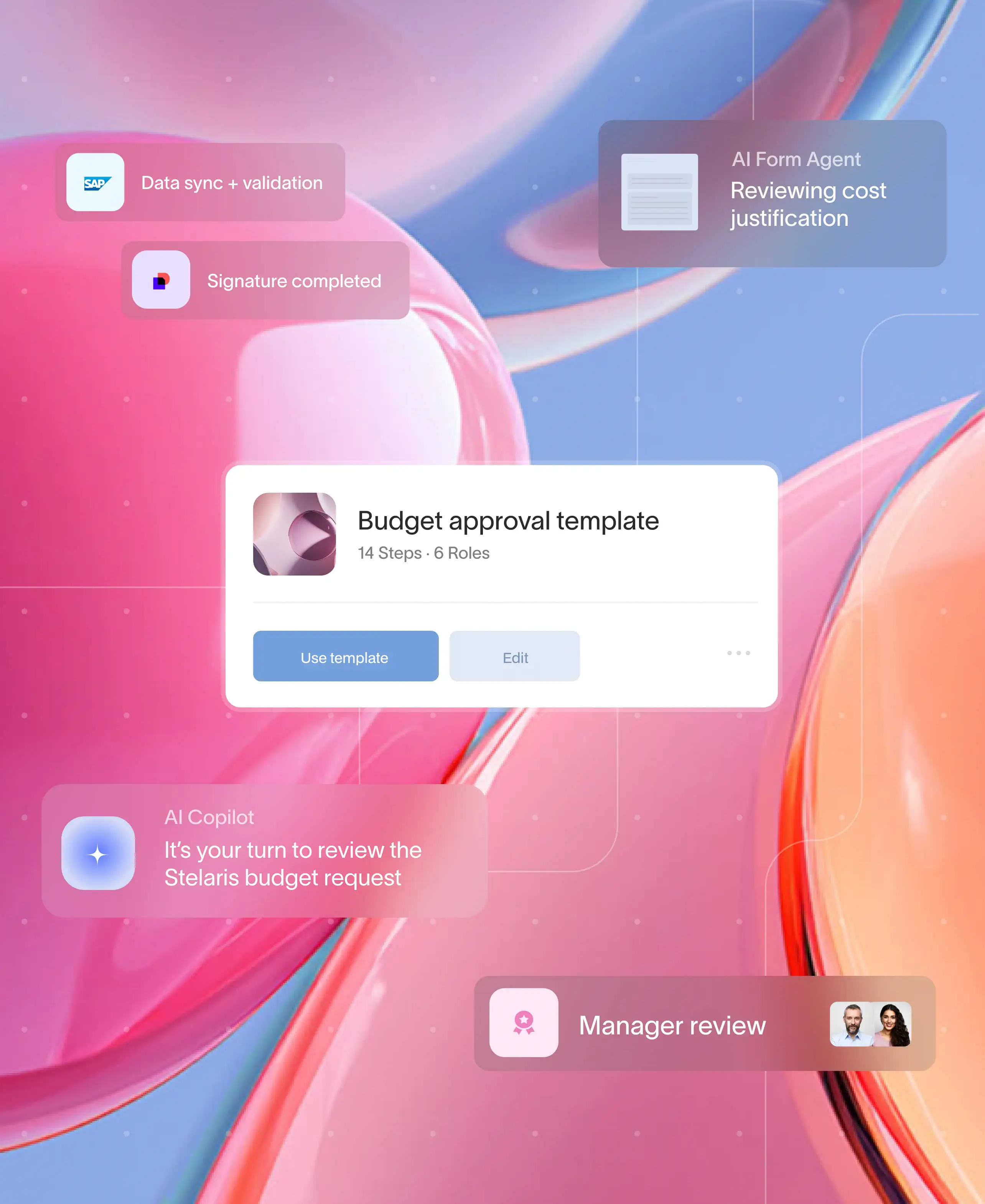
Engaging customers is a critical component of business growth. Businesses that connect deeply with their clients often see increased loyalty, higher sales, and stronger brand advocacy. But how do you turn casual customers into devoted clients? The answer lies in understanding and applying an effective customer engagement model.
Building meaningful relationships with your customers can set your business apart in a crowded marketplace. It's about creating experiences that resonate and keep clients coming back.
What is a customer engagement model?
A customer engagement model is a strategic framework that outlines how a business engages with its clients throughout the customer journey. It defines the touchpoints, communication methods, and support mechanisms that ensure customers feel valued and heard. By implementing a well-crafted client engagement model, businesses can create meaningful experiences that foster long-term relationships.
A client engagement model serves as a roadmap for your team's interactions with clients, ensuring consistency and quality in every engagement. It helps you understand where to focus your efforts and how to deliver the most value at each stage of the customer journey.
Why customer engagement models are essential
A customer engagement model helps you understand your client's needs and preferences. This understanding allows you to effectively tailor your services and communication to meet those needs. Second, a structured engagement strategy enhances customer satisfaction, leading to repeat business and referrals. Finally, it provides a roadmap for your team to deliver consistent and high-quality interactions.
An effective customer engagement model can transform one-time buyers into loyal advocates. It aligns your business objectives with your client's goals, creating a win-win scenario that drives growth and success.
Exploring different customer engagement models
Let's delve into various customer engagement models based on their journey. Understanding these models can help you choose the right approach for your business.
High-touch engagement model
The high-touch engagement model involves frequent and personalized interactions with clients. It's ideal for businesses offering complex or high-value products and services. In this model, dedicated account managers or customer success teams work closely with clients to ensure they achieve their goals.
For instance, companies using a high-touch customer service engagement model provide hands-on support during onboarding and throughout the client relationship. They might offer personalized training sessions, regular check-ins, and tailored solutions to meet specific needs.
This approach builds strong relationships and deep trust. Clients feel valued and understood, which can lead to increased loyalty and long-term partnerships.
Low-touch engagement model
In contrast, the low-touch engagement model relies on automation and self-service tools. It's suitable for businesses with a large customer base or those offering straightforward products. This model minimizes direct interaction but still provides clients with the resources they need to succeed.
An example of a low-touch client engagement model is a software company that offers extensive online resources, tutorials, and automated support systems. Customers can access help when needed without requiring constant personal interaction.
This model is efficient and scalable, allowing businesses to serve many clients without the need for extensive human resources.
Hybrid onboarding
Hybrid onboarding combines elements of both high and low touch models, offering a flexible approach that tailors onboarding to each client’s specific needs. High-value or complex clients may receive personalized support initially, while others can use self-guided resources. This model maximizes resource efficiency while still providing personalized assistance when necessary, helping businesses cater to a diverse customer base.
Retention engagement models
Automated retention model
The automated retention model leverages technology to proactively engage customers, with tools like CRM systems, automated follow-ups, and triggered communications based on customer behavior. Ideal for businesses with a high volume of clients, this model reduces churn by regularly engaging customers with relevant content and resources. It’s a cost-effective way to foster loyalty, ensuring customers stay informed and supported without intensive manual effort.
Customer success manager (CSM) model
The CSM model is a high-touch retention strategy where dedicated Customer Success Managers maintain ongoing relationships with clients, ensuring they receive tailored support and guidance. CSMs focus on understanding individual client needs, providing proactive assistance, and identifying opportunities for growth and upsell. This model is best for high-value clients who require a hands-on approach to maximize their long-term satisfaction and loyalty.
Hybrid retention model
The hybrid retention model blends automated retention efforts with personalized support from CSMs for clients who need it most. This approach allows businesses to maintain broad engagement through automation while still providing dedicated assistance to key accounts. The hybrid model ensures scalable engagement and retention, offering personalized care for high-priority clients while keeping broader client engagement efficient and streamlined.
Customer engagement strategy models: Key components
Regardless of the specific model you choose, certain elements are essential for an effective customer engagement strategy.
1. Understanding the customer journey
Mapping the customer journey helps identify critical touchpoints where engagement can be enhanced. From initial awareness to post-purchase support, knowing where and how to interact with clients is key.
Consider creating detailed personas and journey maps to visualize your client's experiences. This process reveals opportunities to improve interactions and remove friction points.
2. Personalization and customization:
Clients today expect personalized experiences. Tailoring communication, offers, and support to individual needs can significantly boost engagement and satisfaction.
Use data and insights to segment your audience and deliver interactions that resonate. Personalized emails, recommendations, and exclusive offers make clients feel valued and understood.
3. Proactive communication
Rather than waiting for clients to reach out with issues, proactive communication allows you to anticipate needs and address potential problems early. This approach builds trust and demonstrates a commitment to the client's success.
Regular updates, check-ins, and educational content keep the lines of communication open and reinforce your dedication to their goals.
4. Measuring engagement and satisfaction
Regularly assessing engagement levels and client satisfaction provides valuable insights. Surveys, feedback forms, and analytics can help you refine your strategy and address areas for improvement.
Metrics like net promoter score (NPS), customer satisfaction scores, and engagement rates offer tangible data to guide your efforts. Understanding these customer satisfaction metrics help in building an engagement model that is optimized for your ideal customer.
Deep dive: Implementing customer engagement models
Now, let's explore how to apply these concepts in practice. We'll look at detailed steps and provide solutions for common challenges.
Developing a high-touch customer service engagement model
If you decide that a high-touch approach suits your business, here's how to implement it effectively:
- Assign dedicated account managers: Ensure each client has a primary point of contact who understands their unique needs.
- Create personalized onboarding programs: Develop customized onboarding plans that guide clients through initial setup and usage.
- Schedule regular check-ins: Maintain consistent communication to monitor progress and address concerns.
- Provide tailored resources: Offer training, documentation, and support materials specific to the client's industry or use case.
- Gather feedback continuously: Solicit input to improve your services and demonstrate that you value their opinions.
Overcoming challenges in high-touch models
High-touch models can be resource-intensive. To manage this:
- Prioritize clients: Focus on high-value clients who will benefit most from personalized attention.
- Use technology wisely: Leverage CRM systems to track interactions and automate administrative tasks.
- Train your team: Equip account managers with the skills and knowledge needed to support clients effectively.
Implementing a low-touch engagement model
For businesses leaning towards a low-touch approach, consider these steps:
- Develop comprehensive self-service resources: Create knowledge bases, FAQs, and tutorials that clients can access anytime.
- Implement automated support tools: Use chatbots and AI-driven systems to provide immediate assistance.
- Streamline onboarding: Design user-friendly interfaces and guides that facilitate easy adoption.
- Monitor usage and engagement metrics: Use analytics to identify patterns and potential issues.
- Encourage community building: Foster forums or user groups where clients can share insights and support each other.
Addressing low-touch model challenges
While efficient, low-touch models can feel impersonal. To mitigate this:
- Personalize automated communications: Use client data to tailor messages and offers.
- Provide escalation paths: Ensure clients can reach a human representative when needed.
- Regularly update resources: Keep self-service materials current and relevant.
Let’s look at different ways you can work on improving your customer experience by focusing on the different ways to engage your customers further.
Enhancing customer success engagement
To focus on customer success:
- Define clear success metrics: Understand what success looks like for your clients.
- Develop success plans: Collaborate with clients to create actionable strategies.
- Provide ongoing training and support: Offer resources that help clients maximize value over time.
- Use data to drive insights: Analyze client interactions to identify opportunities for improvement.
- Celebrate milestones: Recognize achievements to reinforce positive experiences.
Solutions for common challenges
- Aligning goals: Ensure your objectives align with the client's desired outcomes.
- Maintaining engagement: Use regular updates and value-driven content to keep clients engaged.
- Scaling support: Utilize technology to support a growing client base without sacrificing quality.
Leveraging Moxo for effective client engagement
Building strong client relationships starts with open, efficient communication and collaboration, which are essential for delivering tailored, responsive service. Moxo offers a client portal designed for effective client communication; thereby enhancing your customer engagement strategy. This centralizes all client communications, making it easier to manage interactions across the customer journey. You can also tailor workflows and communication channels to individual client preferences. Moxo provides tools for real-time collaboration, document sharing, and project management. These features facilitate proactive support and streamline processes.
Get started with Moxo to build better client engagement models.
Conclusion
An effective customer engagement model is essential for building lasting client relationships. By understanding your clients, choosing the right engagement strategy, and leveraging tools like Moxo, you can enhance client satisfaction, reduce churn, and drive business growth.
Remember, the key is to focus on the client's needs and continuously adapt your approach to meet them. Engagement isn't a one-time effort but an ongoing commitment to excellence.
Learn how Moxo can help with your client engagement process.
FAQs
How can businesses effectively implement a customer engagement model?
Begin by prioritizing key touchpoints that have the most significant impact on customer satisfaction. Utilizing affordable tools like CRM systems and communication platforms like Moxo can help streamline interactions without requiring a large team. Focusing on personalized, high-impact engagements, such as tailored onboarding experiences, can build strong initial relationships.
How does customer engagement influence brand advocacy?
Effective customer engagement fosters positive experiences that encourage customers to become brand advocates. When customers feel valued and supported, they are more likely to share their positive experiences with others, both online and offline. This word-of-mouth promotion can enhance brand reputation and attract new customers.
Why is effective communication critical in client engagement?
Clear, consistent communication fosters trust, ensures clients feel supported and helps anticipate their needs. Strong communication reduces misunderstandings, improves satisfaction, and enables businesses to provide proactive solutions. Platforms like Moxo streamline communication, enabling real-time updates and seamless client interactions.
How can businesses personalize customer engagement at scale?
Businesses can leverage data analytics and automation tools to deliver personalized experiences to a large customer base efficiently. By segmenting customers based on behaviors, preferences, and demographics, companies can tailor their messaging and offers to meet individual needs.





